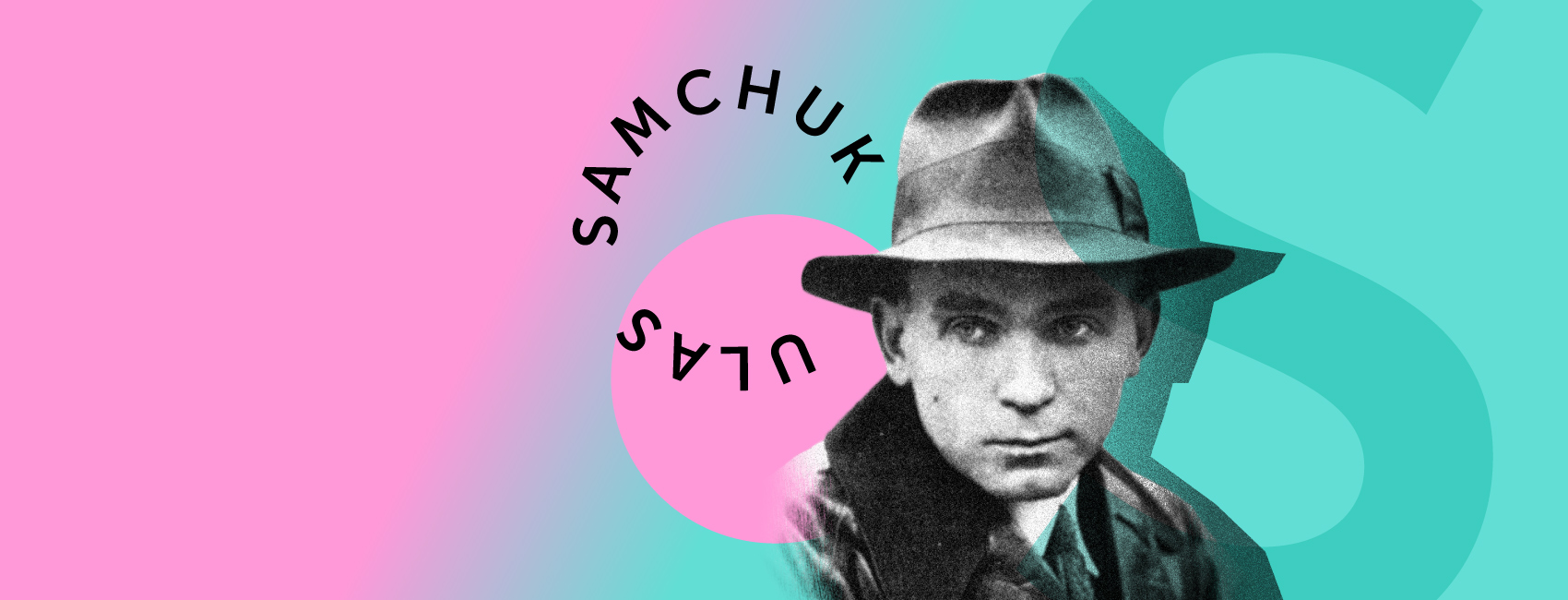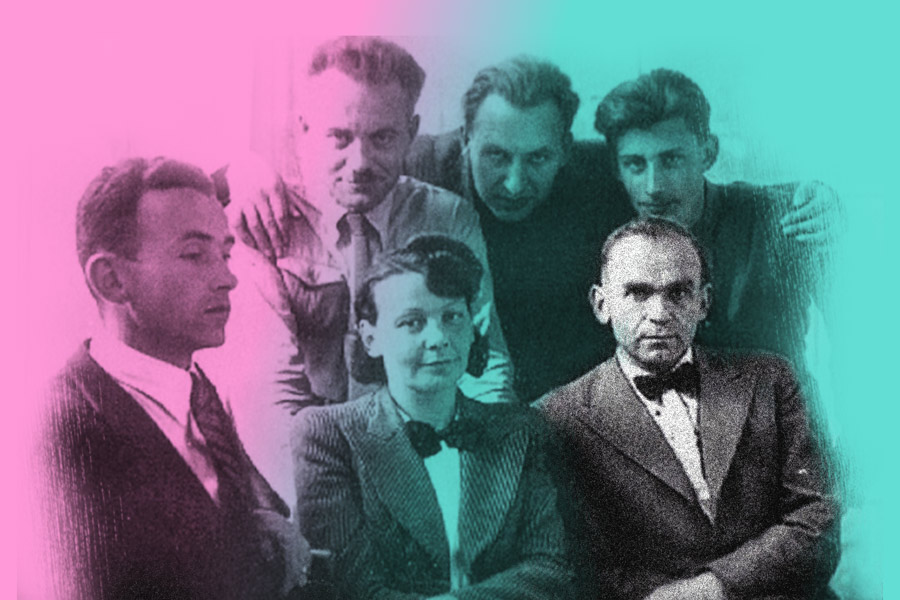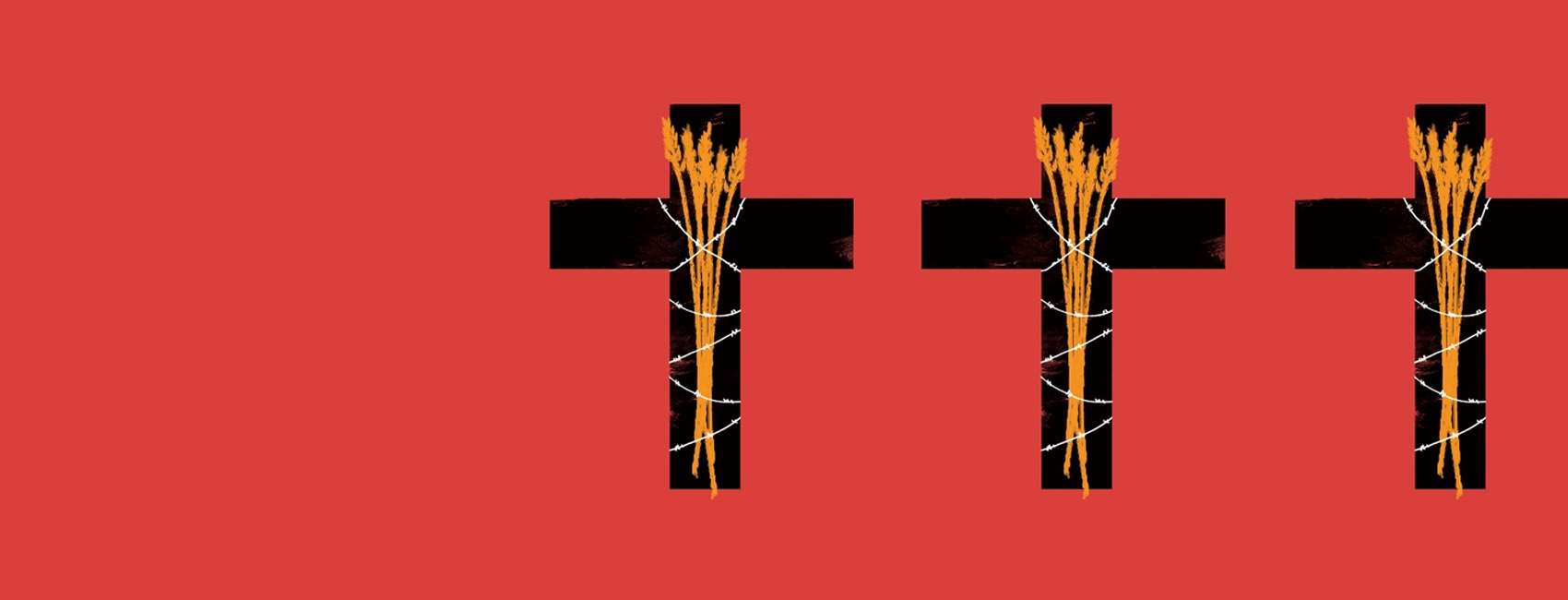* ESC - close the search window
Chytomo Picks
Ulas Samchuk – chronicler of Ukraine through wars, camps, famine, and exile
30.10.2024
Ulas Samchuk (1905-1987) was one of the most prominent Ukrainian novelists of the 20th century. Unlike the many important literary figures who represent the classic canon of the time, he did not serve the Soviet government in one way or another. Instead, he was consistently Eurocentric. Samchuk visited Germany, Italy, France, the Czech Republic, and Poland. Having mastered English, German, French, Polish, and Czech, the author navigated the literature of those countries well, even reading many of their writers in their original language.
Samchuk’s Europeanness determined his rejection of imperialist Russian politics. The writer asserted that Russian culture and the politics of Russian rulers were anti-European. That’s why many of Samchuk’s works featured an argumentative and deep critique of Bolshevism and the Soviet government as an extension of Russian expansive politics. It’s not an accident that this particular author wrote the first novel about Holodomor as executed by the Bolsheviks, titled “Maria” (1934), and also the first novel in world literature about the Soviet Gulag system, “Darkness” (1957). While the earlier novel was translated into English and French (though many of its editions were destroyed with the intervention of Russian special services), the second novel hasn’t yet been shown to the rest of the world. Right after the appearance of “Darkness,” a defamation campaign against Samchuk began in the mass media of Soviet Ukraine.

Among the Ukrainians abroad in the interwar and postwar periods, Samchuk was considered one of the most widely-read Ukrainian authors. In Soviet Ukraine, his works were (obviously) forbidden but some Ukrainians did hide Samchuk’s novels, like his works “Maria” and “Volyn.” The writer was nominated for a Nobel Prize at his 75th jubilee. This was initiated by a Russian emigrant magazine “Sovremennik.” Samchuk, however, didn’t end up receiving this award.
Chronicler of Ukrainian space
At the end of World War II, in 1944, Samchuk was working on the novel “Youth of Vasyl Sheremeta.” In the foreword to this piece, he wrote,
“I want to be the chronicler of Ukrainian space in the era which I myself see, hear, and experience.”
Samchuk was born in 1905 in an old village in the Volyn region called Derman, which preserved many cultural traditions. When Volyn ended up becoming part of interwar Poland, the future writer was studying in the Kremenets Ukrainian gymnasium. He didn’t get to complete his education because he was drafted into the Polish army.
As a soldier, he managed to cross the Polish-German border in 1927 and then moved from Germany to Czechoslovakia in 1929. In Prague, he ended up in an environment of Ukrainian emigrants. The Czech period of his life, which lasted until 1940, turned out to be the most fruitful as that was when the novels that made him famous first appeared.
In 1941, after the beginning of the German-Soviet war, Samchuk came to the city of Rivne, in the region of Volyn, where he started to publish a newspaper named “Volyn.” By the next spring, Samchuk was already being repressed by the German authorities, who found his editorial and journalistic work harmful. The writer was threatened with execution, but well-known Ukrainian figures stood up for him. He was released and allowed to work for a German news agency on the condition that he would write about neutral topics. In 1944, Samchuk left Ukraine as he realized that he would continue to be repressed by the Soviet authorities. He spent the last months of the war in Germany.
After this, Samchuk stayed in the displaced persons camps from 1945-1948. From the camps, Ukrainian cultural figures managed to create the Artistic Ukrainian Movement (MUR), which Samchuk led. He became recognized as a leader of Ukrainian cultural forces who opposed the Soviet regime and found themselves in exile.
The writer moved to Canada in 1948 where he lived out the rest of his life. The said events were described in his multifaceted cultural work, publicist articles, and reports, through which he recorded almost all Ukrainian history of the 20th century.
The edge of the world with conquistadors-builders
One of the most famous works of Ulas Samchuk, along with the novel “Maria,” is the trilogy titled “Volyn.” Its first part, “Where does the river flow?” was first published from 1932 to 1933 in a magazine from Lviv called “Dzvony.” In 1935, the first and second parts of the trilogy were published in the United States, in New Jersey. Samchuk became one of the most popular writers in Western Ukraine and in Ukrainian emigrant circles thanks to this great work. “Where does the river flow?” received positive critical evaluations in the Ukrainian, Czech, Polish, and Italian press. Critics found him similar to François Mauriac and John Galsworthy.
The idea for the “Volyn” trilogy came to the writer when he illegally crossed the Polish-German border in 1927 and found himself in Weimer’s Germany. This story is, in fact, a family chronicle of the Samchuk family (in the trilogy, their family name is Dovbenko). The writer tells the story of his childhood and adolescence, while showing how he and his fellow countrymen, under the influence of the tumultuous events of 1914-1921, transformed from “руських people (Ruthenians)” into Ukrainians.
“Volyn” has a philosophical undertone. Its structure resembles the Hegelian triad. The first part, “Where does the river flow?” describes the “countryside ideal” in times of peace and calm. It acts as a thesis of sorts. The second part, “War and revolution,” is an antithesis. It tells of the dynamic changes in the village of Volyn during World War I and the Revolution. At that time, the Austrian-Russian front was passing through southern Volyn, where the novel is set. The soldiers of the Ukrainian People’s Republic army, Bolsheviks, and Poles all later appear in the region. These experiences change the worldview of the main character, Volodya Dovbenko. It’s worth noting that, for some time, he is enthused by Bolshevism. But, ultimately, he overcomes this “childish illness.” The third part, “Father and Son,” is the synthesis. The novel depicts the transformed village, which, despite the destruction, turns out to be undefeated when generations of fathers and sons continue to assert themselves on their land. The main characters of “Volyn” are not sufferers, but people who battle severe challenges to achieve success. It is not for nothing that one of the reviewers of the work, Oleksandr Mokh, wrote in the Lviv journal “Nova Zorya”:
“… from Samchuk’s book we first heard the voice of a farmer-builder, for the first time we saw the conquistador of our native land…”
RELATED: Ivan Bahrianyi: perfect adventure novels, perfect adventure life
“Ost” epic
In the postwar period, Samchuk worked on the trilogy “Ost,” which he held in high regard. Like “Volyn,” it is a family chronicle. It describes the dramatic turmoil of the Moroz family, starting from the times of the Revolution and Ukrainian War of Independence (1917-1921), and ending with the postwar period. The author began working on this big piece back in 1945. The first part of “Ost,” called “Moroz’s Khutir,” was written in the tough circumstances of the displaced persons camps.
The protagonist of this novel, Hryhir Moroz, is the patriarch of the Moroz family. He created a resilient household from nothing and now lives in a khutir (an isolated dwelling), which seems out of reach from all the societal unrest. When the First World War ended, the February Revolution in Petrograd took place amongst the Universals of the Central Council of Ukraine (the Government of the Ukrainian People’s Republic of 1917-1920). Another revolution in Petrograd (this time by the Bolsheviks), and then came the Bolshevik offensive on Ukrainian territory. None of these particularly bothered old Moroz and some members of his family. They lived their lives.
At first, the Moroz family did not regard the arrival of Bolsheviks as any reason for concern. The old Moroz wishes to preserve his household and his rural world from external destruction. However, that does not work. An atmosphere of permissiveness and lawlessness creeps into the khutir.

The second novel of the “Ost” trilogy, “Darkness,” should be considered, as previously mentioned, the first literary exploration of the Soviet Gulag system. The main characters of this novel are the two sons of Hyrhir Moroz: Ivan and Andriy. The latter, despite his youthful sympathies to the Ukrainian movement in the past, eventually ended up in the Bolshevik camp and became the “correct” kind of Ukrainian Soviet writer, one even respected by Stalin himself.
Ivan, though, goes through the torture chambers of the Joint State Political Directorate (OGPU), the People’s Commissariat for Internal Affairs (NKVD), and through Gulag camps. Andriy rescues him and plans to write a novel about the development of Siberia. Ivan, who had been a good household keeper when he owned the khutir, became a high-ranking Gulag commander. His superiors would set him up with almost unrealistic tasks, such as the development of new natural resources in Siberian conditions or the construction of railroads, highways, and new cities, and he seems able to handle all of these tasks. But the forced labor of the prisoners is neither effective nor of good quality. The built barges sink. At the end of the second part of the “Ost” trilogy, Ivan is summoned to Moscow to be arrested.
Samchuk demonstrated that Bolshevism was a system of total slavery. All people working for the Soviet authorities were slaves, even if de jure they were free.
Not only prisoners are slaves. Villagers who work hard and die of hunger are also slaves. As are urban residents having to “fight for” the basic life’s goods. Even managers, like Ivan Moroz, are slaves. Or even coddled-by-the-government authors, like Andriy Moroz. In this system, the only free person is the supreme leader: Stalin.
“Escape from oneself,” the third part of “Ost,” tells about the wanderings of Ukrainians during and after World War II and life in the diaspora. The main characters of the novel are Ivan Moroz and his daughter Vira. They have to endure a lot, including the war, Soviet and German prisons, camps, working as Ostarbeiters, and, eventually, emigration to North America. Moroz’s wife, Mariana, ends up there as well.
Finally, in faraway Canada, the Moroz family builds their own khutir. Of course, it is not a Ukrainian khutir. And yet… In the finale of “Ost,” representatives of the Moroz family, who live in the free world, gather there. As the trilogy began in a khutir, so it ends there too. Samchuk worked on the second and third parts of “Ost” in Canada. He considered it a matter of honor to write and publish this epic work. The last part of the trilogy was published in 1982 and was the final chord in the writer’s work.
RELATED: Maria, Marko and Maria Again: How Marko Vovchok Loved and Wrote
The publication is a part of the “Chytomo Picks: Classics and New Books from Ukraine” project. The materials have been prepared with the assistance of the Ukrainian Book Institute at the expense of the state budget. The author’s opinion may not coincide with the official position of the Ukrainian Book Institute.
Team of authors: Petro Kraliuk, Nataliia Kushnirchuk
Translation: Olena Pankevych, Nataliia Firsova
Copy editing: Matthew Long, Terra Friedman King
This publication is sponsored by the Chytomo’s Patreon community





